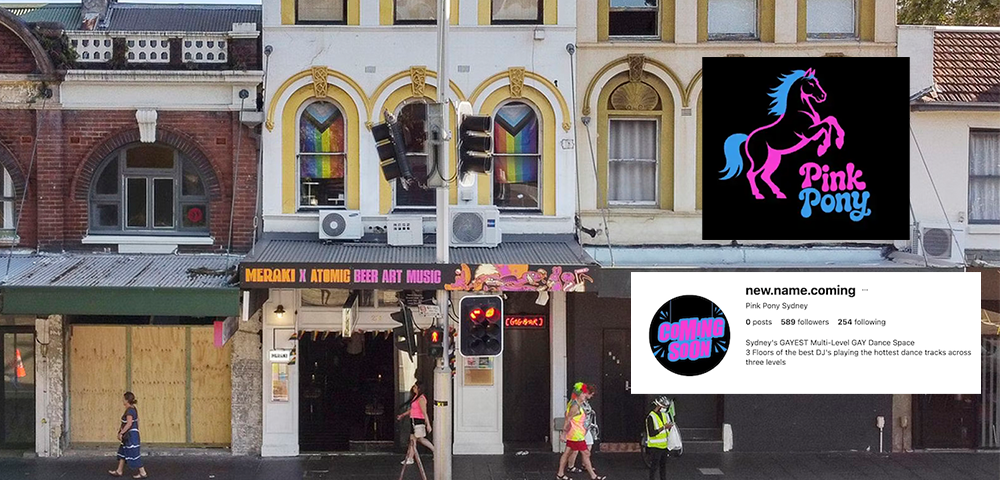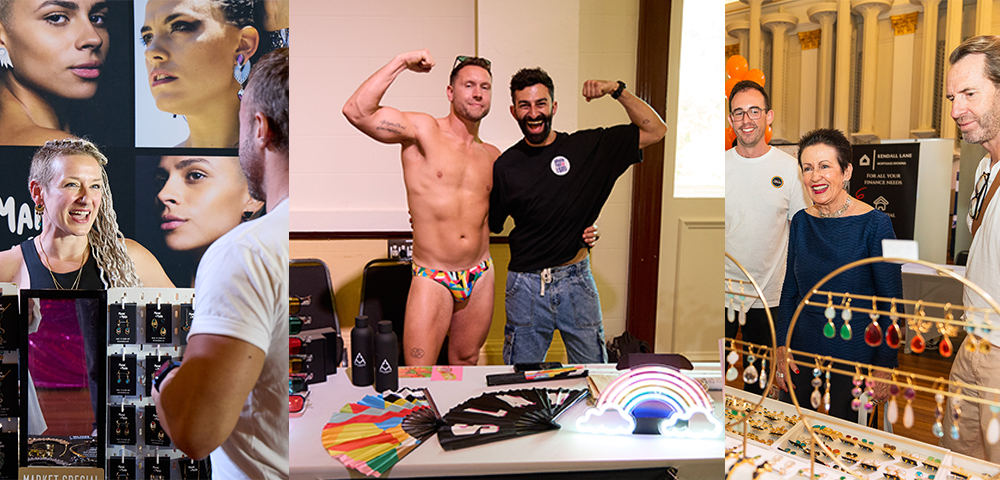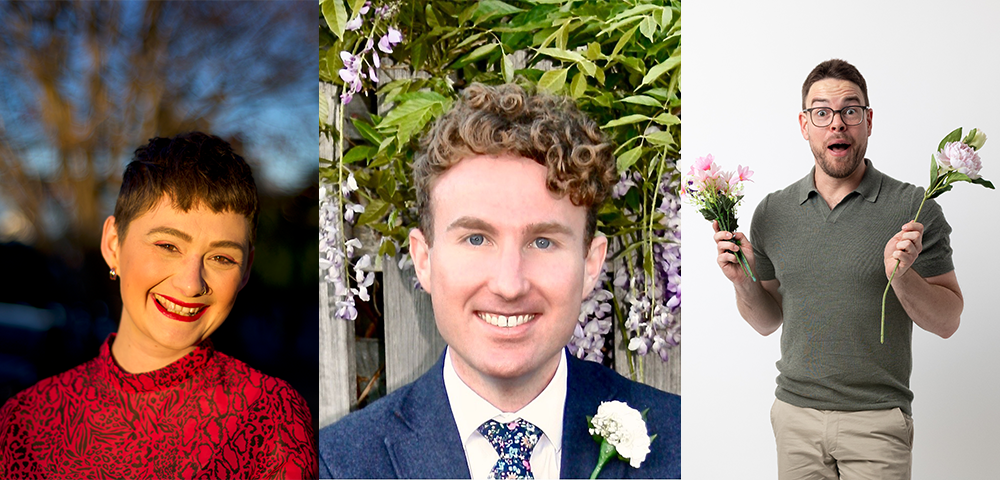
Neighbours like these
It all began with a woman vacuuming her living room, and being interrupted by a knock on the front door. With this classic domestic image, the dramas of Ramsay Street and Neighbours were unleashed upon us back in 1985.
Twenty years later, Neighbours is still a part of the TV landscape, and next week marks its 20th anniversary with a special week-long reunion as former stars return to the show to mark the milestone.
It would be straining credibility ever to classify Neighbours as camp TV. This classic soapie, which was based on the UK’s Coronation Street and has chronicled the comings and goings through the fictional Melbourne cul-de-sac of Ramsay Street, could be described as classically suburban and endearingly daggy, but never quite camp.
But that’s not to say Neighbours has been without its camp moments and it has certainly added to our queer culture. Aside from the enduring image of Harold Bishop in a frilly apron bustling around his kitchen like a domestic old queen, Neighbours has also given television some of its sexiest, best undressed, Speedo-clad hunks.
It’s hard to imagine Australian TV without the parade of such beefcake talents as Guy Pearce, Craig McLachlan, Jason Donovan, Scott Michaelson, Jesse Spencer, Daniel MacPherson and Dan Parris. All appeared regularly shirtless, and sometimes in little more than tight shorts or even tighter Speedos, during their time in Ramsay Street. And the result -“ they became big stars.
Buffed, bronzed boys aside, Neighbours has also presented this country with its greatest gay icon of all time, Kylie Minogue. Minogue emerged Cinderella-like from Charlene’s greasy mechanic overalls on Neighbours to become a glamorous pop princess. Her dance hits and music video images featured regularly at many a dance club and also inspired a whole generation of drag queens.
Minogue’s success paved the way for not only her Neighbours co-stars of the time, like Donovan and McLachlan, but also a parade of imitators who attempted to follow suit by pursuing the path from soapie success to the music charts, including Holly Valance, Natalie Imbruglia and Delta Goodrem.
Neighbours has been incredibly important for the Australian entertainment industry, Alan McKee, senior lecturer in Television at the Queensland University of Technology, says. Neighbours has been like a laboratory where hundreds of potential celebrities have been trotted out -“ and some of them have stuck.
Neighbours really has had a fantastic strike rate -“ quite amazing actually. Part of that success has been finding very, very sculptured young men who are willing to take their clothes off. Guy Pearce, as well as doing that, proved he was also a great actor.
McKee believes Neighbours was perfectly suited to appeal to a key demographic when it launched in the mid-1980s, and has not varied too far from the formula ever since.
It is actually no accident that Kylie came out of Neighbours. At the time, it had exactly the same cross-over demographic -“ 12-year-old girls and gay boys. For the young market, the best way to appeal to them is to have lots of young men taking their shirts off -“ and not too surprisingly, that works for a gay audience as well.
I always remember Craig McLachlan getting his towel caught in the front door and then running down the street naked. Then there was the Full Monty strip show the boys did, and then Jesse Spencer was working as a nude artist model.
Those early boys -“ Donovan, Pearce and McLachlan -“ were huge and no one since can touch them. Dan McPherson did a great nude shoot for the UK gay magazine Attitude, and Spencer has matured very well, but Blair McDonough just does not register on the same scale.
While Neighbours has been thick on the ground with shirtless hunks and singing sweethearts, Ramsay Street, Erinsborough, has been almost devoid of a gay population over the past 20 years. It can also be said it has not had a large Asian, European or Aboriginal population either amid the very white, very middle class inhabitants, but that’s another matter altogether.
In the past 20 years, only six gay characters have been featured in Neighbours. The first gay in the village appeared in 1994 when Andrew McKenzie (John Morris) came out before taking Miss Erinsborough to the school ball. Later that year, Alf Taylor (Andrew Bren) came out to his twin brother Colin, almost ruining Colin’s wedding in the process.
The year 1995 marked a dramatic step for Neighbours with the story of Andrew Watson (Christopher Uhlman), a gay school teacher being bullied by his students after his sexuality had been revealed.
While it marked a major turning point for Neighbours, particularly considering the G-rated 6:30pm timeslot the soapie screens in, it was another five years before another gay character was attempted -“ and then it was only for laughs.
Gino (Shane McNamara) appeared in 2001, a swishy hairdresser who owned the local salon and spoke often of his flatmate Aaron, who was only later revealed to be his partner.
He is a [gay] stereotype, and we don’t have a problem with that as he is not a negative stereotype, Neighbours script producer Luke Devenish says. He is a comic charter and it is for a laugh -“ in the Mr Humphries [of Are You Being Served] kind of tradition.
But at times, Gino has also shown astonishing depth. Like when he was fighting to become godfather to Lynn’s baby son Oscar. What started out as comedy, turned into a situation a lot of gay men can relate to. Gino explained as a gay man he was unlikely to have a child of his own, so he wanted to be a godfather to this child. We went beyond the froth with him and it was quite moving.
Last year, Neighbours took its queerest turn ever when a lesbian finally made her way into Ramsay Street, and stayed for three months. Lana Crawford (Bridget Neval) was out and proud, and stirred up feelings of attraction for teenage Sky (Stephanie McIntosh), culminating in a passionate kiss between the pair.
That was our gayest storyline ever, says Devenish. We haven’t had many gay characters, but those we’ve had, had a degree of impact.
It is unfortunate that in this day and age, anything with the word -˜gay’ in it is going to arouse controversy. But the Lana storyline was controversial purely because Neighbours was daring to acknowledge that lesbians may exist.
Our guidelines are that it has to be acceptable for kids to watch unsupervised, but it is not really the kids we risk offending, it is the parents.
The only rules that apply to a gay character apply to all characters. No one can really talk about their sexuality or their sex life in explicit ways.
After her three-month guest storyline was complete, Lana left with her family for a new life in Canada, rather than meeting with an expected tragic ending.
There is that great tradition that the lesbian is always dead in the final scene, and we were very aware of that as we were writing her out, Devenish says. We wanted to avoid that at all costs. In the evolution of Neighbours, it mirrors that society has been more accepting of homosexuality on TV screens. This is not a story we would have done five years ago.
As Neighbours now moves into its 21st year on air, and with the success of the Lana storyline, more queer changes are planned, including the introduction of a gay male character into the regular cast. It seems the time is finally right for queer culture to make its way into Ramsay Street, rather than just being a product of it.
We have something vaguely in mind, Devenish says. It is likely to be a male character. A gay character as a regular on Neighbours is now do-able and I feel it is something we have to do.
In soap opera storytelling, until the Lana-Sky storyline, we were really behind the times in terms that we hadn’t ever done a same-sex relationship of another kind. For the UK and US soaps, that is familiar story territory.
Five gay characters in 20 years of Neighbours -“ that shows the evolutions of attitudes both on the show and on TV. Neighbours is a yardstick for conservatism -“ we are G-rated, on a mainstream network.
Commercial TV is not about risk taking, it is about entertainment for the broadest possible audience. But attitudes have changed -“ and commercial networks like to reflect that.









